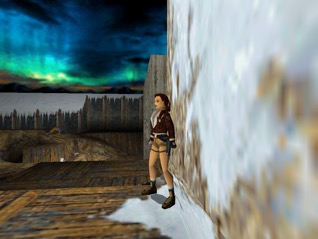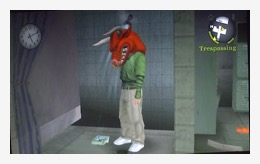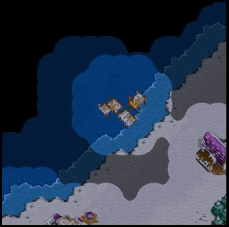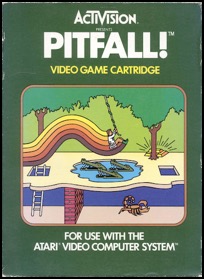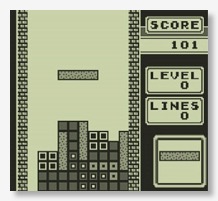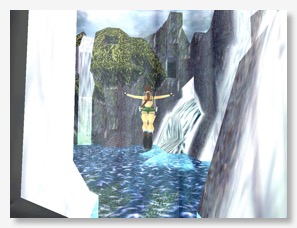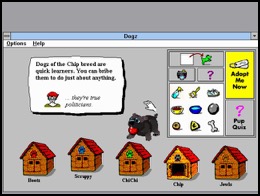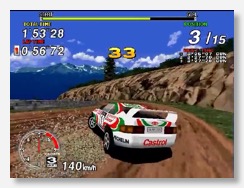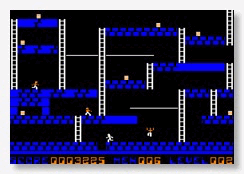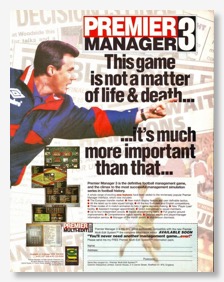26 Oct 2021 — Filed in:
Season 5 | EpisodesTo celebrate the 25th birthday of my favourite game franchise, I thought I'd pull out the old Tomb Raider grid episodes from Season 1 and merge them into one. I also put some time into cleaning up the audio, though it'll still sound rough compared to newer episodes — given the lower-fidelity recordings I was using then. Here's the original episode description:
Every aspect of the original Core Design Tomb Raider series (and by extension the franchise's success post-Core) comes back to the grid that lies beneath it — the majority of the puzzles; the platforming; the cavernous chambers and ruins and outdoor areas that provide a sense of isolation, of solitude and discovery; and Lara Croft's iconic acrobatic movement style. And yet it never would have happened if not for one pragmatic choice made by a programmer early in the game's development.
This is the story of how that came to be, and how it made Tomb Raider…well,
Tomb Raider, based on interviews with Heather Stevens (née Gibson) and Gavin Rummery as well as my past work covering Tomb Raider's history as a freelancer. The second part, which was originally a separate release, also includes discussion of the place that such a grid system has — or might have — in game design today.
See full show notes and episode player…Tags: tomb raider, lara croft, gavin rummery, heather stevens, andy sandham, core design, game design
02 Nov 2020 — Filed in:
Season 4 | EpisodesWhen Don Daglow pitched management at Mattel on an Intellivision game about trying to build a perfect society, he thought he was just creating a "line filler" in their product calendar. Instead he made one of the most important games of all time.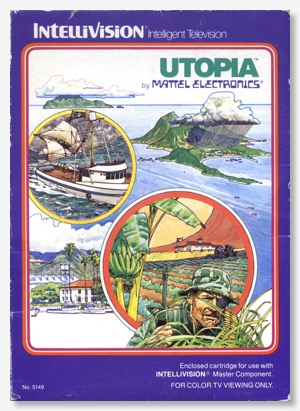
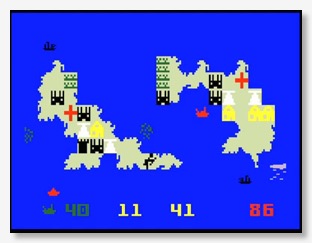
See full show notes and episode player…Tags: don daglow, utopia, intellivision, game design, richard bannister, retro games for mac
28 Sep 2020 — Filed in:
Season 4 | EpisodesOn the rise and, um...
fade out(?) of Chris Sawyer, the genius creator of bestselling, critically-acclaimed simulation games Transport Tycoon and RollerCoaster Tycoon — who made a career out of working at the cutting-edge, in bare metal assembly code that he wrote and optimised (and optimised again) on his own.
Until the cutting-edge left him behind.
See full show notes and episode player…Tags: chris sawyer, transport tycoon, rollercoaster tycoon, simulation, game design, programming
22 Sep 2020 — Filed in:
Season 4 | SoundbitesFormer Links, PGA Championship Golf, and Tiger Woods PGA Tour lead Vance Cook explains how and why his team(s) created new ways to swing a virtual golf club — beginning with the C-shaped gauge in Links and leading into "TrueSwing" on Front Page Sports Golf and PGA Championship, and then ending with the motion-controller (Wiimote) swing in Tiger Woods Wii.
Also listen for insights into the difference between sports games that aim for simulation versus those that aim for the "emotional experience".
See full show notes and episode player…Tags: vance cook, links, golf, sports games, game design
27 Feb 2020 — Filed in:
Episodes | Season 3How 2006 PS2 hit Bully (aka Canis Canem Edit) showed an alternate future for Rockstar and the open-world genre, with its compromised-yet-brilliant schoolyard satire — here I dive deep into the game, not for its overblown controversies but rather for its struggles against technological limitations and its triumphs in world-building, satire, and focused, more intimate and structured open-world game design. And I wonder why, nearly 15 years on, open-world games continue to strive for bigger and bigger playgrounds filled with more and more trivial collectibles rather than building on the legacy of Bully's deliberate, glorious smallness.
See full show notes and episode player…Tags: bully, rockstar, open world, ps2, dma design, game design, satire, comedy
11 Feb 2020 — Filed in:
InterviewsI speak to the creator of Shmuplations.com, a large repository of translated interviews with Japanese game developers, about his approach to doing the translations, his insights on the Japanese games industry, and the highs and lows (and struggles) of running a time-intensive side hustle.
This is the second entry in a new series of interviews I'm running alongside the main show — every month(ish) I'll talk to a different person who's exploring games history, in one way or another, to learn about the many ways people are preserving the games industry's past as well as to further our understanding of how this wonderful medium (and the industry that's built around it) has come to be the way it is now.
See full show notes and episode player…Tags: shmuplations, games history explorers, japanese games, 1980s, 1990s, game design
30 Jan 2020 — Filed in:
Episodes | Season 3In war, no information is complete. No intelligence absolute. No view of the enemy unobstructed. There’s no such thing as perfect knowledge. It is a realm of uncertainty, where decisions are made on flawed and often outdated data — as though looking through a fog.
Hence the term, the fog of war, a military phrase with origins in the musings of a 19th century Prussian general called Carl von Clausewitz. A phrase that’s since found its way into video game lexicon, and video game design, as we explore here. (Featuring interview clips with former Blizzard lead programmer Patrick Wyatt about the fog of war in Warcraft II and StarCraft.)
See full show notes and episode player…Tags: fog of war, warcraft, blizzard, game design, wargaming, strategy, close combat, adventure, rogue, patrick wyatt, empire
10 Jan 2020 — Filed in:
Soundbites | Season 3Here's some great game design wisdom from one of the legends of the business — Age of Empires, Sid Meier's Civilization, and Sid Meier's Railroad Tycoon co-creator Bruce Shelley.
See full show notes and episode player…Tags: age of empires, bruce shelley, game design
22 Nov 2019 — Filed in:
Season 3 | EpisodesIt’s strange to think of a time before jumping was a standard video game action, to be expected whenever and wherever you have control over an individual character. A time before you could hop onto enemies’ heads and not die, or swing on ropes, or move back and forth across a vast level — many times wider than the screen.
But these ideas were rare, and just beginning to find their way into video game lexicon, when David Crane came along and with one single game turned them into tropes. With just one game that had begun as a simple tech demo of a running man. One game that would go on to define a console generation, amid 64 consecutive weeks atop the Billboard bestsellers chart and a whopping four million lifetime sales on a gaming system that itself sold 30 million units.
That one game is Pitfall!, or Jungle Runner, as it was called during development, an Indiana Jones-like adventure distilled into the (home console) video game technology of the era.
This is the story of Pitfall!'s creation and its phenomenal legacy, pieced together from myriad sources — interviews, reviews, history articles, promo videos, book chapters, retrospectives, and a 2011 postmortem delivered at the Game Developers' Conference by none other than David Crane himself.
See full show notes and episode player…Tags: pitfall, atari 2600, david crane, game design, programming, 1980s, platformers
06 Jun 2019 — Filed in:
Season 2 | SoundbitesFor the 35th anniversary of Tetris' original Russian version, I pulled out this clip from my interview with Henk Rogers — co-founder of The Tetris Company and the dude who got Tetris handheld and console publishing rights back in the 1980s (and also creator of what was arguably the first JRPG, The Black Onyx).
Listen for Henk's memories about the strategy inherent in the game's scoring system and the story of how they fixed a bias in the Game Boy version's random number generator.
See full show notes and episode player…Tags: game design, alexey pajitnov, game boy, henk rogers, nintendo, tetris
12 Feb 2019 — Filed in:
SoundbitesLegendary puzzle designer Scott Kim discusses the process and principles of puzzle-making for games. This is excerpted from an interview I conducted while researching my book The Secret History of Mac Gaming.
See full show notes and episode player…Tags: game design, puzzle games, scott kim, heaven and earth, secret history of mac gaming
02 Feb 2019 — Filed in:
InterviewsFor any of you who aren't aware, last week was the 35th anniversary of the release of the original Mac. I published a Medium article to celebrate the milestone, and here now you can listen to an audio version of that. It's 14 current and former game developers talking about the early Macintosh computer and how it inspired them to make something insanely great.
See full show notes and episode player…Tags: game design, mac, rand miller, robyn miller, the colony, david alan smith, scott kim, tony goodman, bill appleton, macpaint, glenda adams, the manhole, darrell myers, roy harvey, eric zocher, silicon beach, charlie jackson, lisa computer, 1984, ben haller, brian thomas, if monks had macs, gordon walton, secret history of mac gaming
16 Sep 2017 — Filed in:
Episodes | Season 1The story of the one of the earliest flight simulator games, Airfight, a favourite among the PLATO community back in 1973, based on an interview with its creator. Airfight was a multiplayer flight combat sim with wireframe graphics and real-time chat, and it was an influence on the first home computer flight simulator, subLOGIC's fittingly-named 1980 game Flight Simulator for the Apple II and TRS-80.
See full show notes and episode player…Tags: game design, airfight, brand fortner, bruce artwick, flight simulator, multiplayer games, plato, silas warner, simulation, sublogic
23 Oct 2017 — Filed in:
Episodes | Season 1A story from the dawn of 3D sports games, and the forgotten link between the 16-bit isometric and 32-bit 3D EA Sports games — this is how FIFA 3DO transformed the way sport was represented in video games.
See full show notes and episode player…Tags: game design, 3D, fifa, ea sports, isometric, marc aubanel, soccer, sports games, 3DO
23 Dec 2017 — Filed in:
Episodes | Season 1Every aspect of the original Core Design Tomb Raider series (and by extension the franchise's success post-Core) comes back to the grid that lies beneath it — the majority of the puzzles; the platforming; the cavernous chambers and ruins and outdoor areas that provide a sense of isolation, of solitude and discovery; and Lara Croft's iconic acrobatic movement style.
And yet it never would have happened if not for one pragmatic choice made by a programmer early in the game's development.
This is the story of how that came to be, and how it made Tomb Raider…well, Tomb Raider, based on interviews with Heather Stevens (née Gibson) and Gavin Rummery as well as my past work covering Tomb Raider's history as a freelancer.
See full show notes and episode player…Tags: game design, 3D, lara croft, tomb raider, toby gard, heather stevens, gavin rummery, core design, level editors
18 Feb 2018 — Filed in:
Episodes | Season 1Continuing the story from Part 1, this is how the original Tomb Raider's grid-based engine/level editor impacted on the series, on Lara Croft's rise to fame, and on the shifting sands of blockbuster game development. This episode also discusses the place that such a grid system has — or might have — in game design today. Featuring input from former Core Design artists and level designers Heather Stevens and Andy Sandham as well as programmer Gavin Rummery.
See full show notes and episode player…Tags: game design, 3D, core design, lara croft, level editors, tomb raider, gavin rummery, heather stevens, andy sandham, toby gard
28 Mar 2018 — Filed in:
Episodes | Season 1On the late Mike Singleton and the importance of Midwinter and The Lords of Midnight, his two great works. After switching from high school English teaching to professional game development in the 1980s, Mike quickly rose to the top of the industry. His games pushed the limits of what was possible, and he routinely crafted worlds that were way ahead of their time.
Here, based on archival research and old magazine interviews, I present part of his incredible story.
See full show notes and episode player…Tags: game design, amiga, atari st, midwinter, mike singleton, open world, the lords of midnight, british games
14 Jun 2018 — Filed in:
Episodes | Season 1Frustrated by the unjustified furore that surrounded his tame interactive movie game, designer Rob Fulop turned to Santa for help. And with a clever business model he and his team at PF Magic invented a new kind of game, one in which you adopt and care for a digital animal — a virtual dog or cat, or something more exotic, with a personality and needs and quirks not unlike a real one.
See full show notes and episode player…Tags: game design, catz, dogz, hexing, night trap, petz, pf magic, rob fulop, simulation, virtual pets, us congressional hearings into video game violence
19 Jul 2018 — Filed in:
Episodes | Season 1On June 11th, 2018, character designer and artist Shoji Mizuno passed away. He was a key figure back in the 1990s at the now-defunct Hudson Soft, a renowned Japanese games publisher — having directed art or design, or sometimes both, on more than a dozen games in the popular Bomberman franchise as well as providing original character designs for the Beyblade anime series.
Since this year is also the 35th anniversary of the release of the first Bomberman game on the MSX, I thought now would be a good time to look back on how the explosive puzzle franchise made its way into the world — and into the hearts of millions.
See full show notes and episode player…Tags: game design, bomberman, hudson soft, shoji mizuno, japanese games, multiplayer games, eric and the floaters, dynablaster
23 Nov 2018 — Filed in:
Episodes | Season 1On the 90s girl games movement, and its assault on the status quo of the video game market, featuring Girl Games Inc founder and former filmmaker Laura Groppe.
See full show notes and episode player…Tags: game design, girl games, laura groppe, brenda laurel, business, theresa duncan, barbie, mattel, teen digital diva, marketing, 90s gaming
08 Jun 2019 — Filed in:
Episodes | Season 2Sega Rally Championship changed everything for the racing genre, and the 1995 off-road arcade hit was an incredible game too. This is the story of its development, critical reception, and long-term legacy.
See full show notes and episode player…Tags: game design, sega rally championship, sega, rally games, tetsuya mizuguchi, japanese games, multiplayer games, ridge racer, racing, daytona usa, arcade, kenji sasaki, colin mcrae, sega saturn
01 May 2019 — Filed in:
Episodes | Season 2The story of how a terrible description of the Donkey Kong arcade game led to the creation of Lode Runner, one of the greatest games of all time and one of the earliest games with a built-in level editor.
See full show notes and episode player…Tags: game design, apple ii, arcade, brøderbund, doug smith, level editors, lode runner, puzzle games, donkey kong, mainframe games
03 Sep 2019 — Filed in:
Episodes | Season 2On the rise and fall of the Premier Manager series of soccer management games — a former PC gaming juggernaut that lost its way amidst a shuffle of developers and publishers — and the part it played in the broader consolidation and homogenisation of sports games (of all kinds) over the past 20 years or so.
See full show notes and episode player…Tags: game design, gremlin, infogrames, premier manager, british games, business, championship manager, football manager, sports interactive, soccer, sports games, amiga, pc
01 Jul 2019 — Filed in:
Episodes | Season 2How Nintendo and its mascot created a genre, and a combat-racing franchise heavyweight, and in the process gave us a masterclass in game balance, with the best-selling 1992 Super Nintendo game Super Mario Kart.
See full show notes and episode player…Tags: game design, super mario kart, nintendo, super nintendo, mario, racing, multiplayer games, japanese games
25 Jul 2019 — Filed in:
Episodes | Season 2Far from a mere "Worms in 3D", Hogs of War was its own breed of madness. Hear the story of how it evolved from a concept of "Command and Conquer with pigs", what made it such a well-designed satire, and how this underrated PlayStation game saw the funny side of serious global conflict.
See full show notes and episode player…Tags: game design, gremlin, worms, hogs of war, infogrames, ps1, artillery, british games, multiplayer games, command and conquer, comedy, satire
